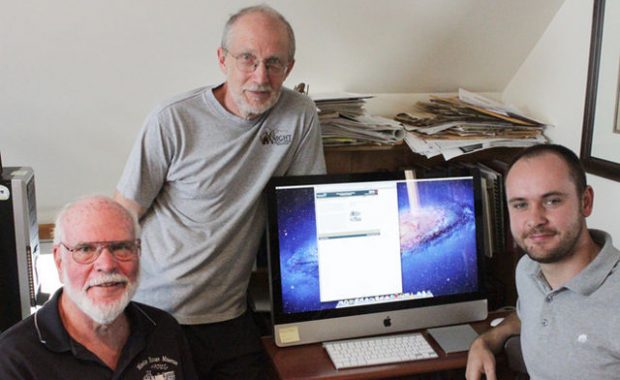COMBERMERE – Combermere is a region of the Madawaska Valley with a long and rich history.
Thanks to the hard work of a few aspiring individuals, though, that history can now be viewed online.
Local residents David Kelley, David Henstock and Iwan Fay-Fright worked together in a collaborative setting at the Mission House Museum and Gallery, for months on end, to pour hundreds of photos and a handful of personal stories and videos into an online venue.
After receiving $5,000 in funding from the Canadian Heritage Information Network (CHIN), the project was green-lit and the upstairs of the Mission House was abuzz with activity.
With the grant money in hand, the purchase of a new Nikon camera and an Apple computer were both essential steps for the first stages of the project.
David Kelley, curator of the Mission House, worked with Fay-Fright in transferring any written text or photos to the website.
“The computer and the camera were vital parts of pulling together the video and everything else. Without that, we wouldn’t have had it,” Kelley said.
Henstock links his desire to make the webpage with his own experience of emigrating from England to Canada.
Before becoming a Canadian citizen, Henstock was reading national literature and stumbled upon a nationally funded program called Community Memories.
“It all happened during the preparation for citizenship and I saw a reference that said ‘visit the museum on the national historic site’, so I found the website, and found out about a program called Community Memories that is designed to capture rural community life and put it into the national history museum,” Henstock noted.
Having worked in Information Technologies for most of his life, Henstock was enthused about the potential and seeing how it could relate to the Combermere area.
“At museum committee meetings, we’d been discussing how the museum is a very finite space so we wanted something more. We’ve been discussing this problem for a while and so I said ‘why don’t we look at doing something where the exhibits become virtual’, with the theory that we could digitize things. I wasn’t sure how we would host all of that online but luckily, we found a way,” Henstock said.
The Community Memories program was the perfect venue for the three men to collaborate and get everything online, and to have it all hosted through a national website.
The program asked for examples of things like interests of a community, significant historical events and the like.
After submitting the application, the three pioneers could only wait with bated breath.
“The deadline was February 4, 2011 and then we had to ‘hurry up and wait’. We worked on it through the fall of 2011 and we were told in December of 2011 we were approved and that we had to have it completed by April of 2012,” Henstock noted.
Taking on different roles, Kelley dictated the stories to Fay-Fright and he would enter them into the computer. With close to 10,000 photographs in his hard drive, Kelley and the two others had to decide what stories they wanted to capture.
There were some snags along the way, though, as the three of them found the Legacy software, which they were required to use, to be a bit cumbersome at times.
“The templates were already in place with the software, and it was a bit confusing at times as their technology seems to be a few steps behind,” Henstock said.
Story continues in the August 22 issue of The Valley Gazette.
